Digital health—it’s flipping the script on medical documentation, changing the way healthcare folks jot down, stash, and swap patient info. At ScriberJoy, we’ve seen it up close—the grand pivot from paper clutter to sleek electronic setups.
This tech jump? It’s a game-changer for patient care… think better accuracy, think turbocharged efficiency across the board. So, what are we diving into today? Why digital health isn’t just hype… it’s the future of medical documentation, ready to supercharge healthcare delivery for ages. Buckle up.
How Digital Health Transforms Medical Documentation
The Digital Revolution in Health Records
So here’s the thing – Electronic Health Records (EHRs) have hit the big time. Why? Because they’ve become the must-have in the medical doc game. From 2019 to 2021, about 86% of non-Federal general acute care hospitals got on board with a 2015 Edition certified electronic health record (EHR). This isn’t just checking a box… it’s moved the needle on accuracy and completeness of patient records. No more guessing what that scribble meant, reducing those pesky errors that come from trying to interpret Dr. Chicken Scratch.
Telemedicine: Care on Your Screen
Cue the pandemic – and telemedicine hit the fast lane. Virtual visits up by 50% in early 2020 compared to the same spell in 2019 (thanks, CDC, for the numbers). This boom in screen-time care means one thing: documentation needs to catch up. Healthcare folks now need to be all over tools that can seamlessly integrate video chat notes right into patient records.
AI and Machine Learning: The New Scribes
Enter AI and Machine Learning, shaking up the scene in medical documentation. Natural Language Processing (NLP) algorithms aren’t just party tricks; they’re transcribing doc-patient chats with a kind of spooky accuracy. The Journal of the American Medical Association spilled the beans – AI-assisted documentation could slash doc burnout by cutting documentation time by up to 78%. That’s huge.
The Role of Advanced Transcription Services
Front and center in this AI game – advanced transcription services like ScriberJoy. They’re blending algorithm magic with human oversight to hit over 99% accuracy in medical transcriptions. This tag-team effort means healthcare pros can bank on their documentation being rock-solid, all while putting some time back in their day.
Future Prospects of Digital Health in Documentation
Looking ahead, digital health tech isn’t just here to play; it’s here to transform medical documentation. The next-gen tools promise more than just paper trails – think real-time insights that help steer clinical decisions. Providers jumping on this train will be in the driver’s seat for delivering sleeker, more cutting-edge patient care.
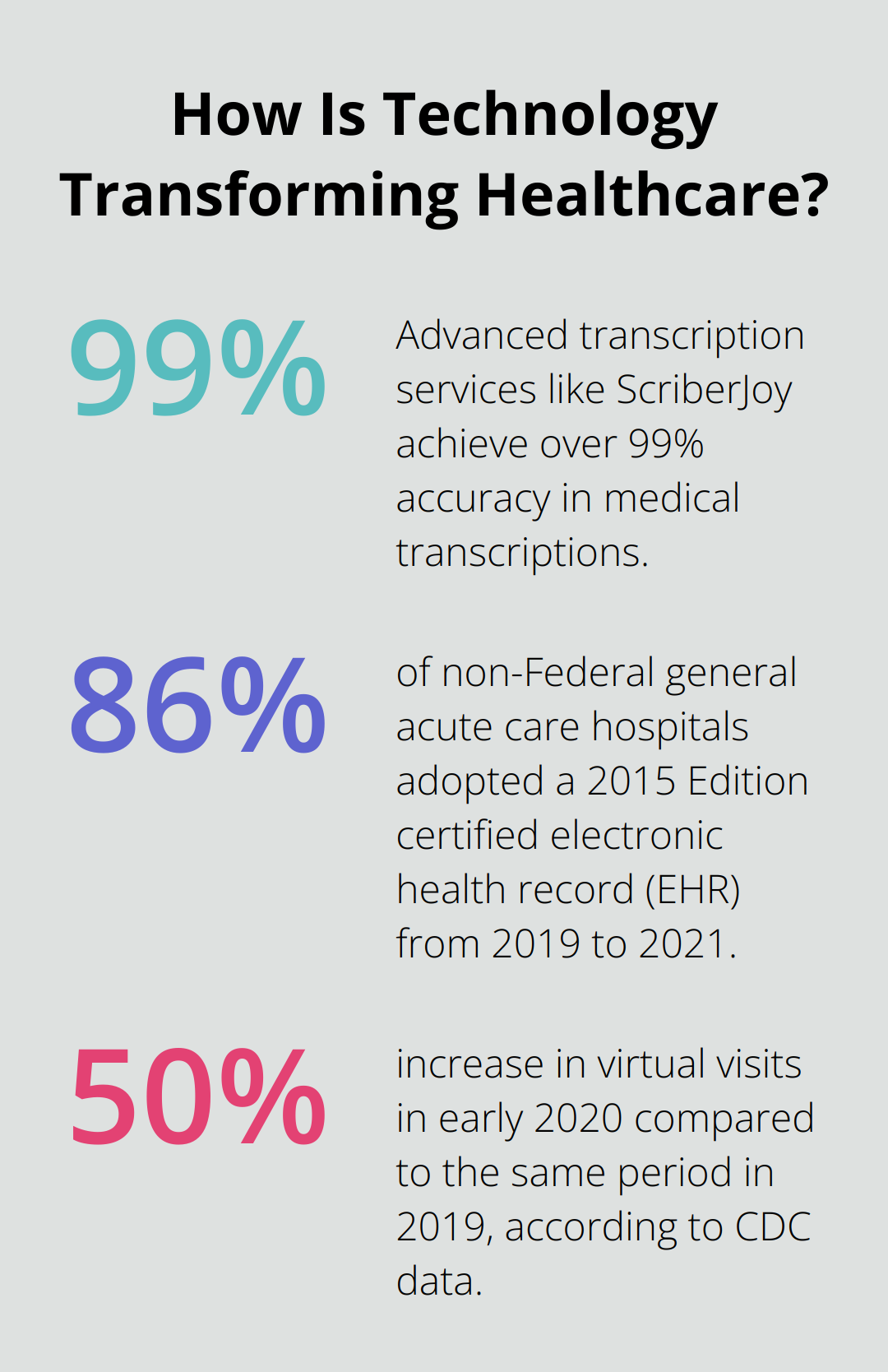
What’s next? Digging into the nuts and bolts of how digital health changes the game in medical documentation. Let’s get into how all these tech leaps turn into the real-world bonanza for healthcare providers and their patients.
How Digital Health Supercharges Medical Documentation
Digital health? It doesn’t just tweak the game-it tears up the old manual and drafts a whole new playbook for medical documentation. We’re talking a tech-driven upheaval in how healthcare folks capture, store, and use patient info. Buckle up.
Precision in Patient Records
Gone are the days of squinting at doctor scribbles and rummaging through paper piles. Digital health tools are boosting accuracy to new heights. There’s plenty of solid proof that electronic medical records cut down on medical goofs and keep patients safer. Hallelujah.
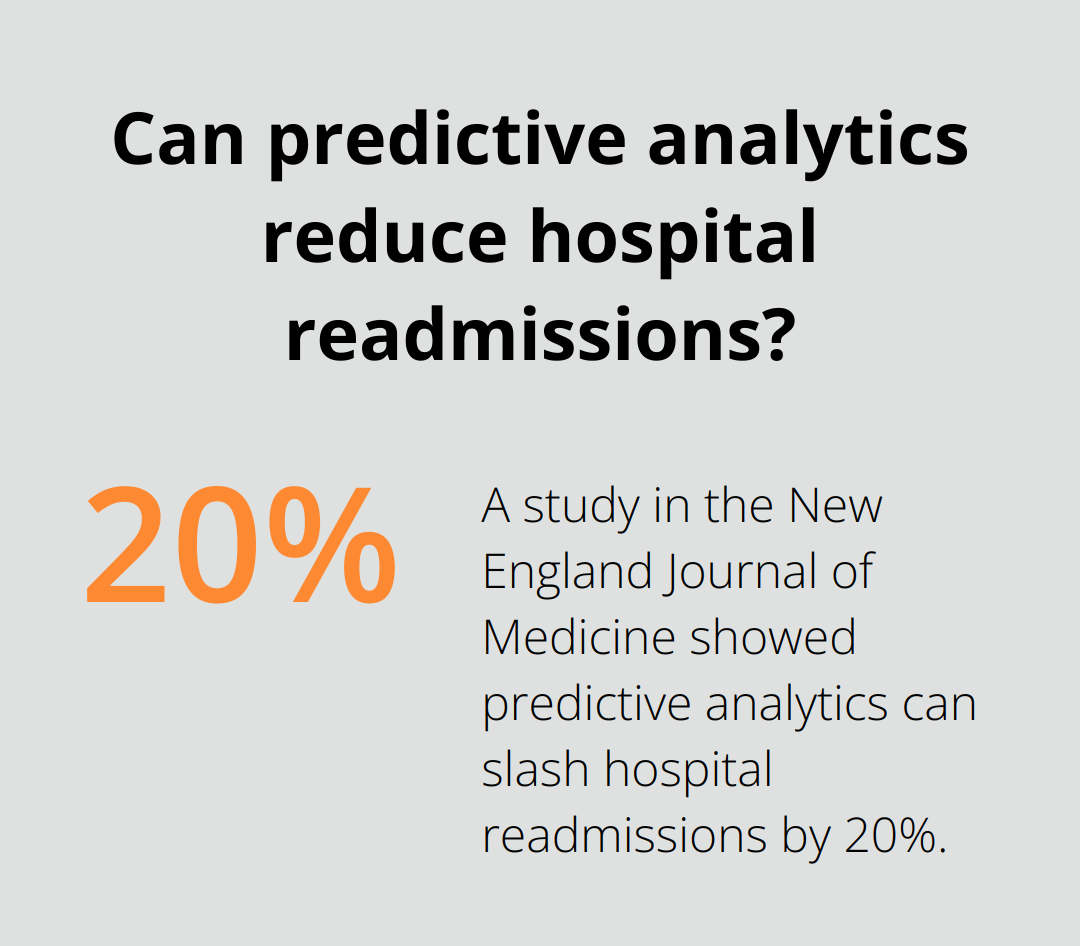
These digital docs paint a fuller picture of patient health. Providers can now track trends, see patterns, and make smarter calls-effortlessly. What’s the upshot? A deep, rich understanding of every patient’s health odyssey.
Information at Your Fingertips
Forget fax machines and endless phone tag-it’s all history. Digital health? It’s axed these annoyances. Now, health pros can dive into a patient’s entire history with a couple of clicks, no matter where or when. Easy peasy.
And this is more than just convenience-it’s game-changing. In emergencies, fast access to accurate info can be the difference-maker. A recent study dug into how electronic health records boost the quality and safety of healthcare.
Efficiency That Saves Lives
In healthcare, time is gold, and digital health delivers more of it. Advanced transcription services (looking at you, ScribeJoy) are leading the pack, slicing down the time spent on paperwork so pros can zero in on what matters-caring for patients.
The stats back it up. One study showed docs spend two hours on paperwork for every hour with patients. Digital tools flip that script, freeing up time to let them do what they’re best at-healing. Powerful stuff.
Data-Driven Decisions
Now here’s where digital health really struts its stuff. All that data? It doesn’t sit around collecting dust-it’s driving insights that overhaul patient care.
Predicting a patient’s readmission risk or catching drug interactions before they blow up-these aren’t dreams. They’re realities, thanks to the data-crunching power of digital health systems.
The impact doesn’t lie. A study in the New England Journal of Medicine showed predictive analytics can slash hospital readmissions by a whopping 20% (a victory lap for hospitals, patients, and their loved ones).
Looking ahead, digital health isn’t just nudging medical documentation’s future-it’s reshaping the now. Next up? We’ll dive into the challenges healthcare folks face with these game-changing technologies and the clever solutions busting through these roadblocks.
Overcoming Digital Health Hurdles
Privacy Protection: A Top Priority
Ah, privacy… the ever-looming issue that keeps healthcare leaders up at night. 2022 was a rough year-data breaches went up, with the Office for Civil Rights getting 720 reports of breaches involving 500 or more records. So, what’s the fix? You need some heavy-duty encryption, regular security check-ups, and staff training in data protection like it’s second nature. It’s about building a fortress of privacy where everyone knows they’re the gatekeepers.
Resistance to Change: A Common Obstacle
Change… most people hate it. Especially in healthcare, where mistakes have big consequences. The American Medical Association did a survey, and guess what? About 40% of doctors feel buried under the tech wave. Solution? Get them in on the decision-making. Let them try out new systems before going all in. Show them the good stuff-like more time with patients-so they can see what’s in it for them.
Interoperability: Bridging the Gap
Different systems chattering away in their own languages-that’s frustrating. By 2023, 70% of hospitals were still playing the same old tune-no change since 2022. What’s the secret sauce? Embrace those standardized data formats like HL7 FHIR-basically a universal language for health data. When platforms are on the same page, everything clicks.
Digital Age Upskilling: A Necessity
Tech is only as smart as the folks using it, right? The Journal of Medical Internet Research nailed it-poor training’s a top blocker for digital health. What’s needed? Continuous, hands-on training. Yep, not just one-off events but an ongoing process. Peer mentoring can be gold-tech-savvy folks showing their colleagues the ropes can work wonders.
Choosing the Right Tools
Picking the right digital health tools… it’s like finding a needle in a haystack. There’s a ton out there, but whatever you pick should fit your specific needs like a glove. Take medical transcription, for example-ScriberJoy is killing it, blending AI with human checks for super accurate results. Whatever you choose, make sure it’s got strong support, ticks all the industry boxes, and meshes well with your existing systems.
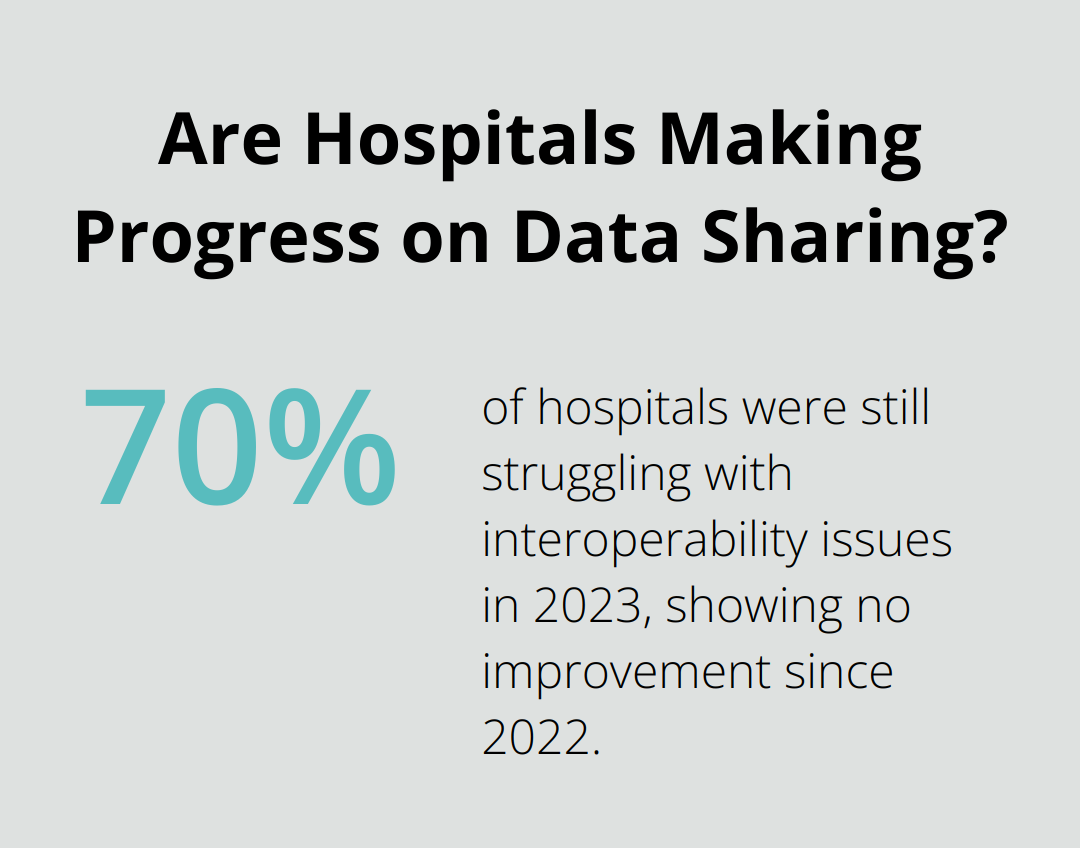
Final Thoughts
So, digital health-it’s flipping the script on medical documentation. We’re talking chucking the paper and getting with the electronic health systems. What does that mean? You’re looking at better records, easy access, and a smoother ride for healthcare providers. And just when you think it can’t get better, AI and machine learning step in and take it up a notch-hello, more accurate transcriptions and data insights that actually help in making clinical decisions.
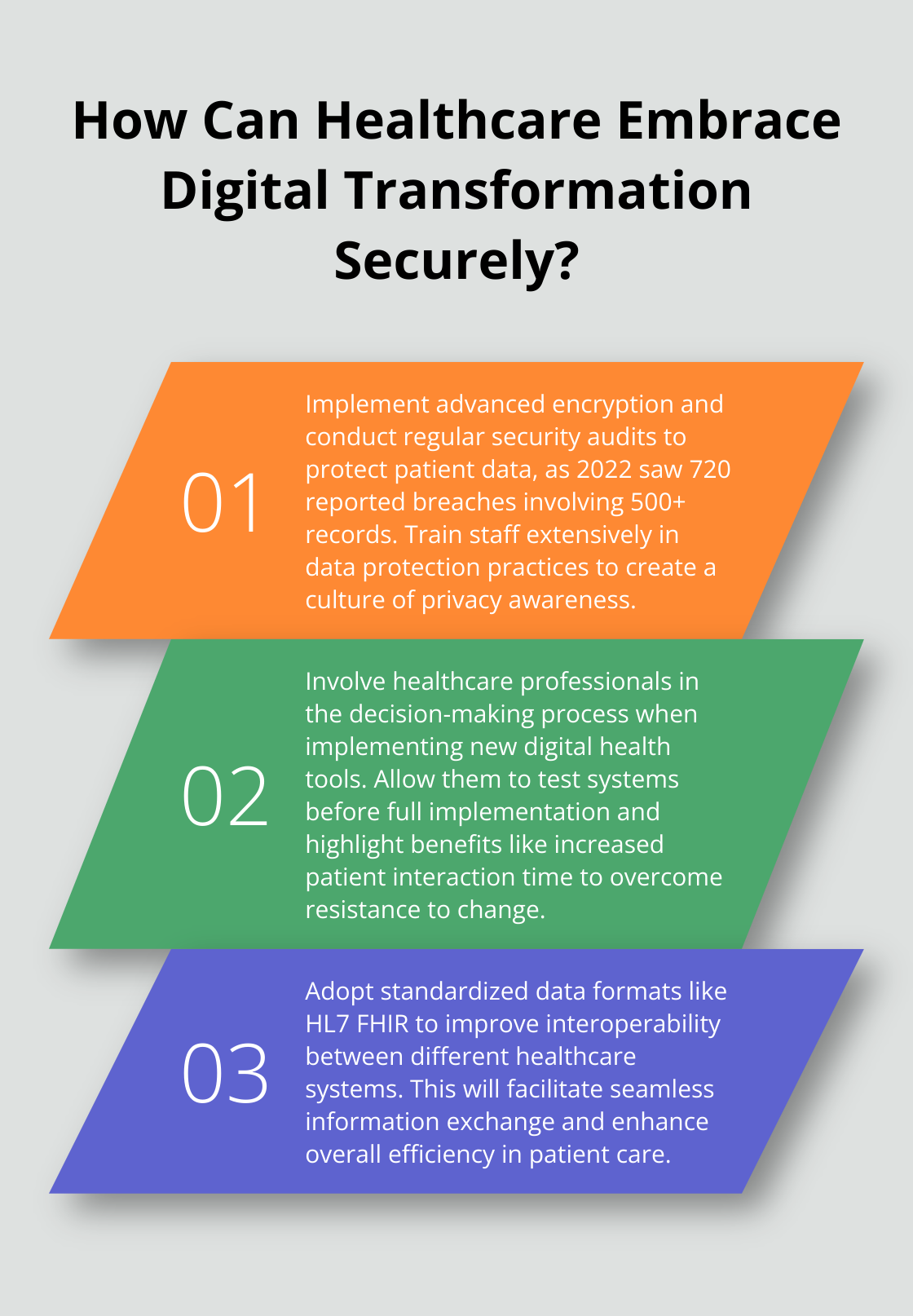
And then you’ve got heavy hitters like ScribeJoy jumping into the mix. These transcription services are not just add-ons, they’re revolutionizing the game. They’re slicing through the admin clutter, freeing up healthcare pros to actually see and talk to patients-imagine that. The road ahead? Even more AI-fueled documentation and real-time analytics.
If healthcare folks jump on this tech train, they’re setting themselves up to deliver top-shelf, efficient care in a world that’s spinning faster every day. Sure, you’ve got bumps to navigate (think privacy freak-outs and the ol’ “But we’ve always done it this way” crowd), but with tight security and some brainy education, those hurdles aren’t roadblocks. Digital health? It’s shaping tomorrow’s medical documentation and it’s all for the better.
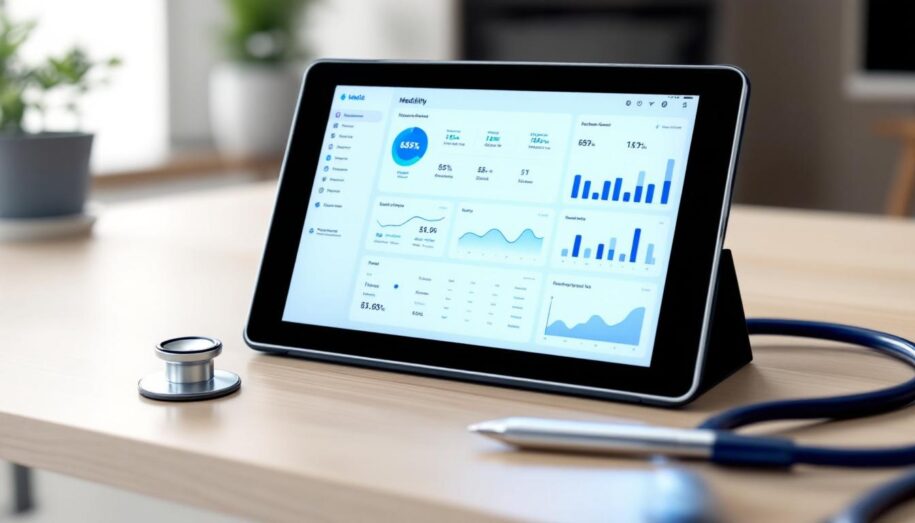
Leave a Reply
You must be logged in to post a comment.